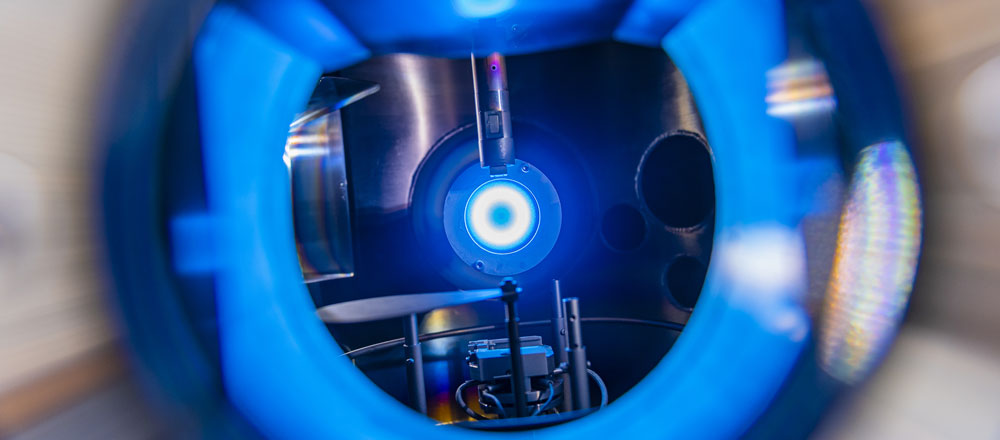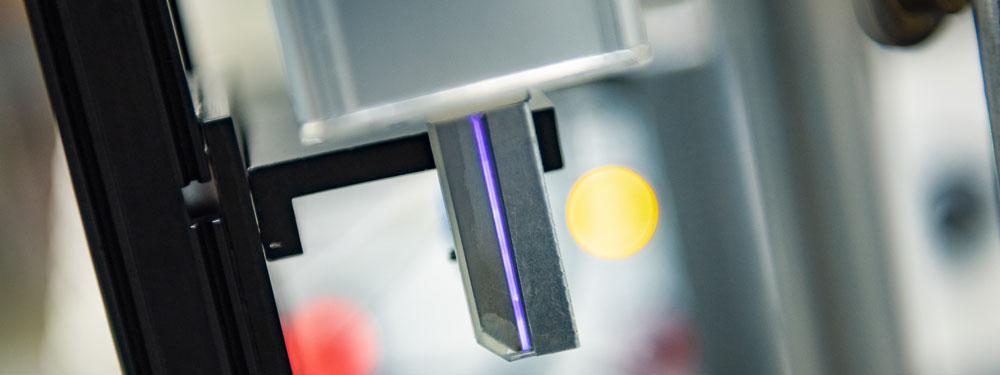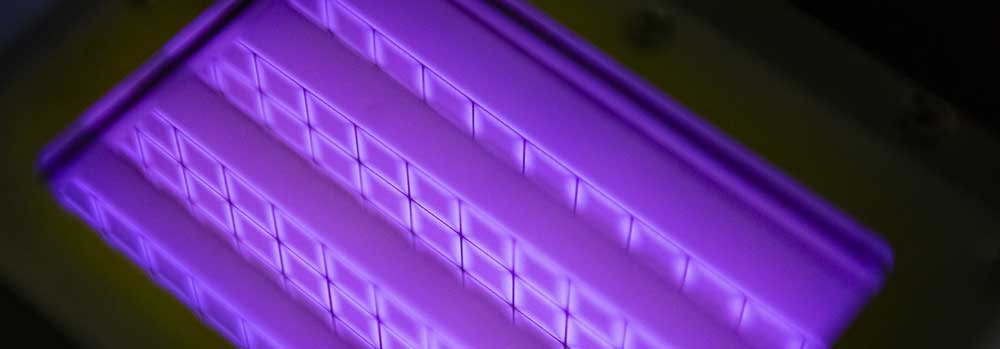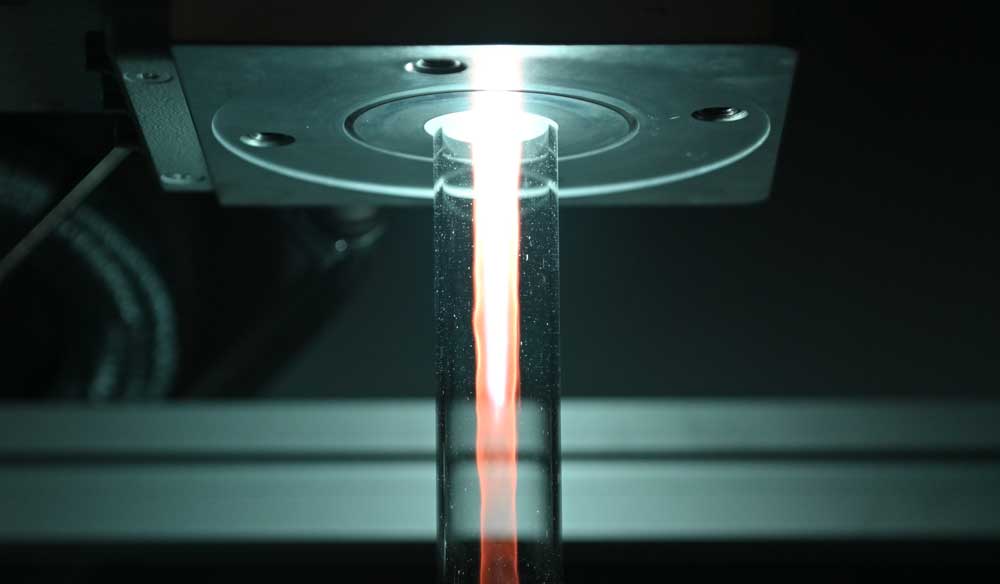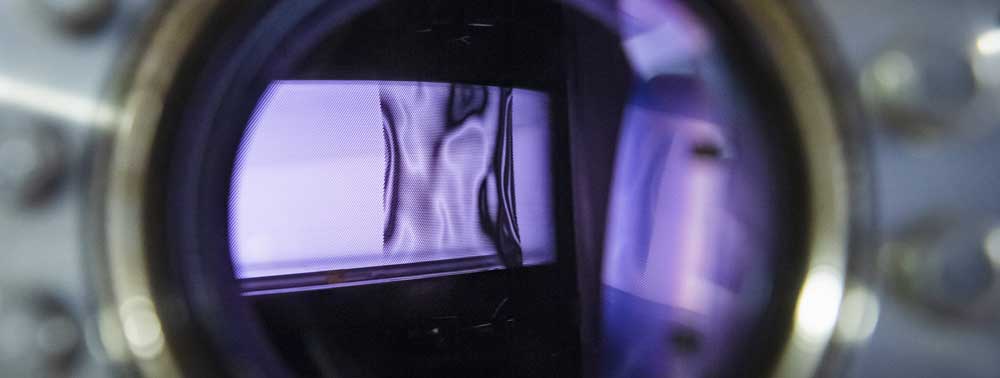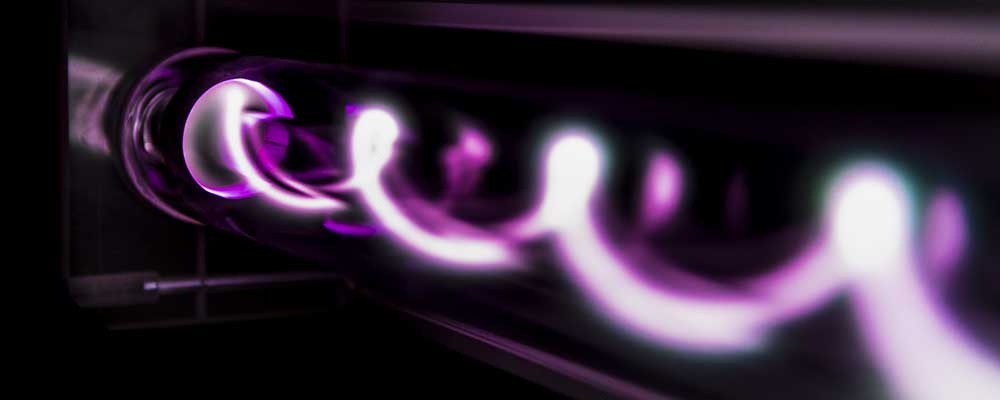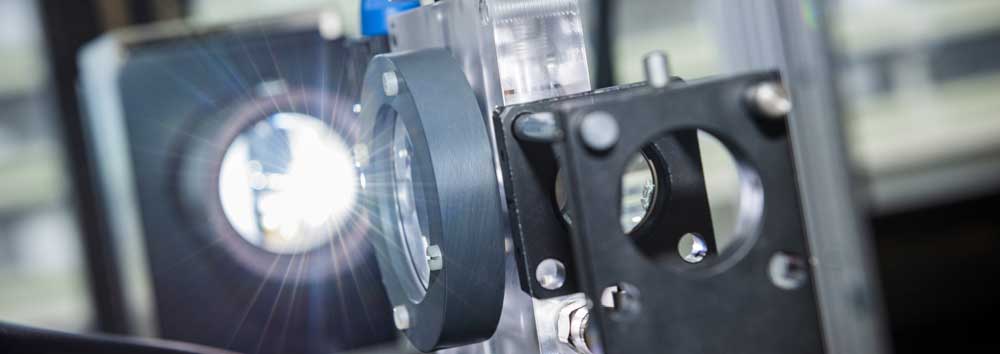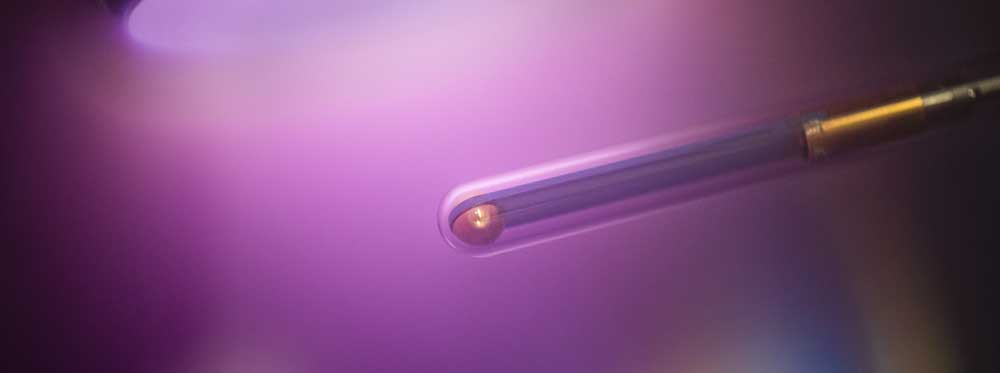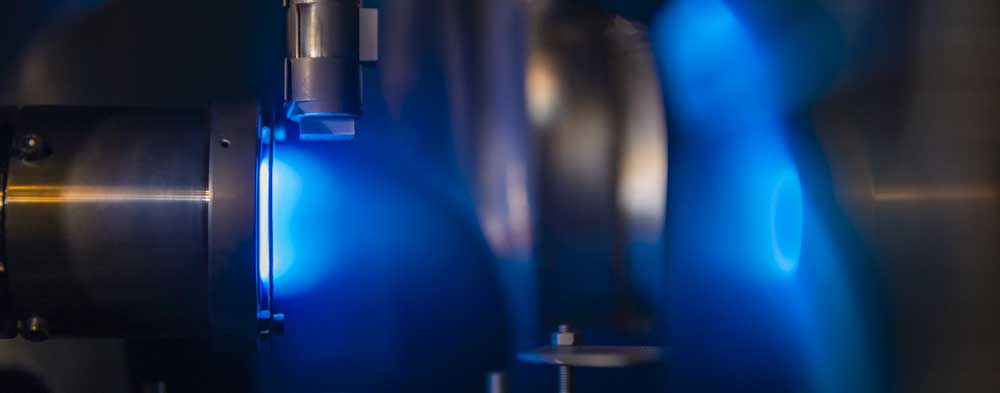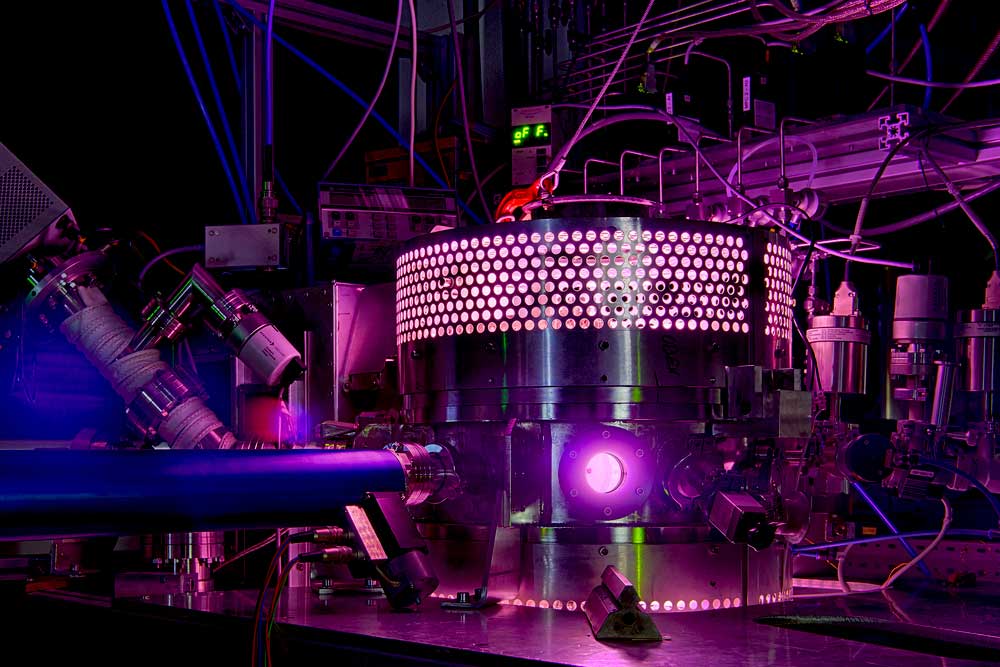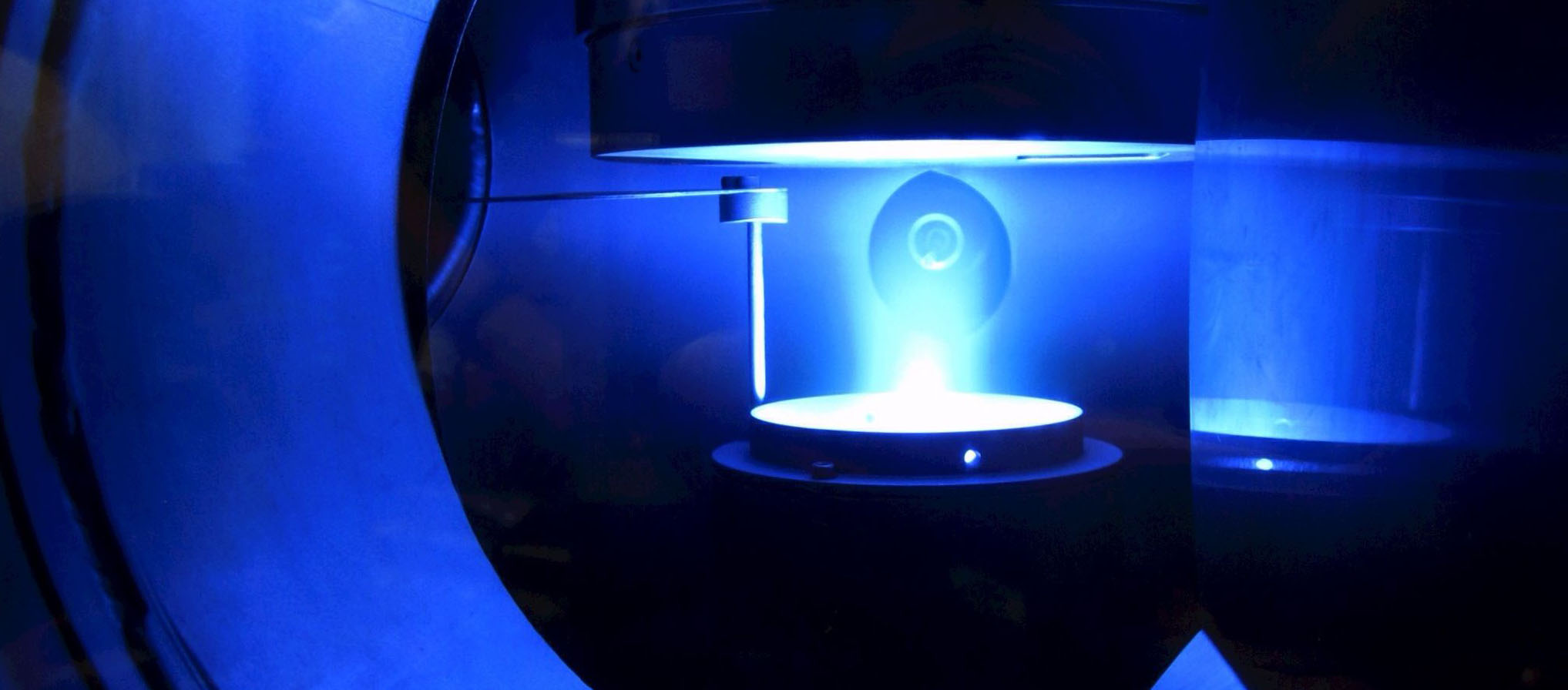A7 - Plasma AerodynamicPIV MeasurementParticle Image Velocimetry (PIV) measurements showing the |
- Details
Project B8 - Biotechnology
Plasma-driven biocatalysis
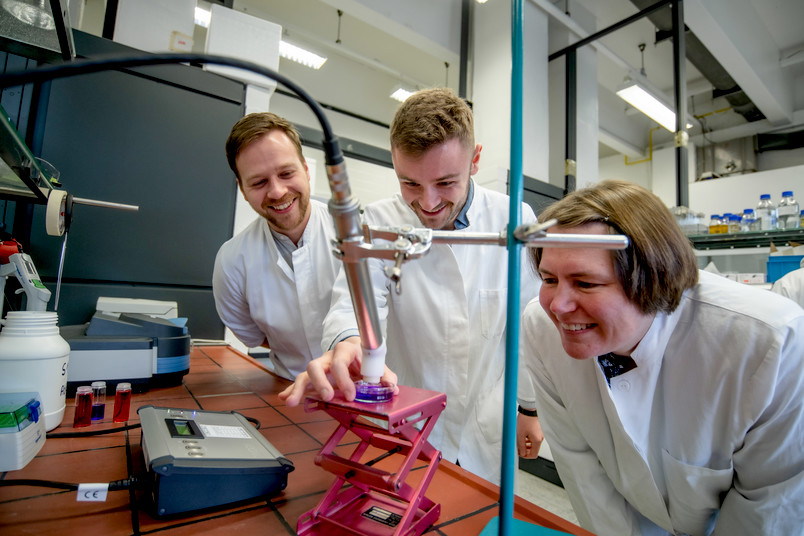
A research team from Bochum has developed a new method to drive catalytically active enzymes.
Compared with traditional chemical methods, enzyme catalysis has numerous advantages. But it also has weaknesses. Some enzymes are not very stable. Enzymes that convert hydrogen peroxide are even inactivated by high concentrations of the substrate. A research team at Ruhr-Universität Bochum (RUB), together with international partners, has developed a process in which the starting material, i.e. hydrogen peroxide, is fed to the biocatalysts in a controlled manner using plasma. The enzymes themselves are protected from harmful components of the plasma by a buffer layer. Using two model enzymes, the team showed that the process works, as reported in the journal “ChemSusChem” from 5 February 2020.
Milder conditions, less energy consumption and waste
In biocatalysis, chemicals are produced by cells or their components, in particular by enzymes. Biocatalysis has many advantages over traditional chemical processes: the reaction conditions are usually much milder, energy consumption is lower and less toxic waste is produced. The high specificity of enzymes also means that fewer side reactions occur. Moreover, some fine chemicals can only be synthesised by biocatalysis.
The weak spot of enzyme biocatalysis is the low stability of some enzymes. “Since the enzyme often has to be replaced in such cases – which is expensive – it is extremely important to increase the stability under production conditions,” explains lead author Abdulkadir Yayci from the Chair of Applied Microbiology headed by Professor Julia Bandow.
Hydrogen peroxide: necessary, but harmful
The research team has been studying two similar classes of enzymes: peroxidases and peroxygenases. Both use hydrogen peroxide as a starting material for oxidations. The crucial problem is that hydrogen peroxide is absolutely necessary for activity, but in higher concentrations it leads to a loss of activity of the enzymes. As far as these enzyme classes are concerned, it is therefore vital to supply hydrogen peroxide in precise doses.
To this end, the researchers investigated plasmas as a source of hydrogen peroxide. Plasma describes the fourth state of matter that is created when energy is added to a gas. If liquids are treated with plasmas, a large number of reactive oxygen and nitrogen species are formed, some of which then react to form long-lived hydrogen peroxide, which can be used for biocatalysis.
Biocatalytic reactions with plasma-generated hydrogen peroxide are possible
In an experiment in which horseradish peroxidase served as one of the model enzymes, the team showed that this system works in principle. At the same time, the researchers identified the weak points of plasma treatment: “Plasma treatment also directly attacks and inactivates the enzymes, most likely through the highly reactive, short-lived species in the plasma-treated liquid,” outlines Abdulkadir Yayci. The research group improved the reaction conditions by binding the enzyme to an inert carrier material. This creates a buffer zone above the enzyme in which the highly reactive plasma species can react without harming the enzyme.
The researchers then tested their approach using a second enzyme, the unspecific peroxygenase from the fungus Agrocybe aegerita. This peroxygenase has the ability to oxidise a large number of substrates in a highly selective way. “We successfully demonstrated that this specificity is maintained even under plasma treatment and that highly selective biocatalytic reactions are possible using plasma,” concludes Julia Bandow.
written by Maike Drießen, RUB
- Details
Public outreach
Plasma workshop at Bo.Ing 2020
The SFB-TR 87 and CRC 1316 joined the workshop program of the Bo.Ing 2020. At the Bochum engineering forum "BO.Ing", pupils are given an insight into the engineering sciences in workshops, laboratory tours and discussion groups. The event is organised by the zdi network IST.Bochum.NRW and is implemented in cooperation with universities from Bochum and the surrounding area. Sixteen pupils attended two different workshops and learned the basic ideas about plasma and its applcation. In hands-on activities, the girls and boys were able to perform their own experiments.
87 and CRC 1316 joined the workshop program of the Bo.Ing 2020. At the Bochum engineering forum "BO.Ing", pupils are given an insight into the engineering sciences in workshops, laboratory tours and discussion groups. The event is organised by the zdi network IST.Bochum.NRW and is implemented in cooperation with universities from Bochum and the surrounding area. Sixteen pupils attended two different workshops and learned the basic ideas about plasma and its applcation. In hands-on activities, the girls and boys were able to perform their own experiments.
- Details
Professorships
Dr. habil Julian Schulze appointed as Visiting Professor at Dalian University China
Dr. habil Julian Schulze has been appointed as Visiting Professor at Dalian University, China. He collaborates mainly on the analysis and modeling of radio frequency discharges at low and atmospheric pressures.
- Details
Conference Committee Chair
Dr. habil. Julian Schulze GEC Executive Committee Chair 2020
PI Dr. habil. Julian Schulze has been elected as GEC Executive Committee Chair with the tenure beginning 10/2020. The Gaseous Electronics Conference (GEC) is a prestigous plasma science meeting of the APS, which is organized annually usually in the US.
- Details
Professorships
Prof. Dr. Julia Bandow accepted the offer for the chair of applied microbiology at RUB
Prof. Dr. Julia Bandow, Ruhr University Bochum, declined a call to the Heinrich Heine University Düsseldorf for the W3 Professorship for Biotechnology and Pharmaceutical Biology, a call to the Westphalian Wilhelms University in Münster for the W3 Professorship for Microbiology and a call from the Technical University of Darmstadt for the W3 professorship for microbiology. Instead she accepted the offer of the Ruhr University Bochum for the W3 professorship for applied microbiology.
- Details
Award
Prof. Uwe Czarnetzki awarded International Fellow of the Japan Society of Applied Physics
Prof. Uwe Czarnetzki from project A1/A2 of the CRC 1316 was awarded international fellow of the Japan Society of Applied Physics. The award ceremony will be held September 18th, 2019 during the Japan Society of Applied Physics autumn meeting. During the ceremony, the honored fellows are invited to present their scientific contribution. The status of international fellows of the Japan Society of Applied Physics is an honor awarded to scientists who support the progress of the Japan Society of Applied Physics in recognition of their achievements. Congratulations!
- Details
MGK
International School on Low Temperature Plasma Physics: Basics and Applications 2019
The traditional summer school on low temperature plasma physics was held in the Physikzentrum in Bad Honnef and from Octobre 5th, 2019 until Octobre 12th, 2019. The PIs contributed to the lecturing program and new PhD and master students of the CRC1316 attended the school.
- Details
Guests at EP2
Two French scientists visit RUB labs
Bruno Cailler and Juslan Lo visited the research group EP2 in Bochum from April 1st to April 5th, 2019. Both scientists are working at the Non equilirbium plasma diagnostics laboratory (Diagnostics des Plasmas Hors Equilibre or DPHE) at the INU Champollion in Albi. Juslan Lo is associate professeor and Bruno Caillier is professor.
Juslan Lo received his Master’s Degree in Electrical Engineering and Automation from the Institut National Polytechnique of Toulouse in 2008 and PhD in Plasma Physics and Engineering from Université de Toulouse III in 2012. His main interests include interactions between plasma discharges, electromagnetic waves and biological substrate. During his PhD., he took interest in reconfigurable plasma-based photonic crystals and metamaterials, specially within microwave range frequencies. He joined INU Champollion in 2015 where he currently holds the position of Associate Professor. His current interest is the coupling between high frequency waves and plasma discharges in order to obtain favorable conditions for target species generation for environmental and medical purposes. His visit to Dr. Achim von Keudell's laboratory in University of Bochum was motivated by different experimental plasma characterization setups used in University of Bochum. He is interested in characterizing plasma discharges used in his work.
Bruno Caillier is working on non equilibrium plasmas at low pressure and atmospheric pressure, his interests are DBD lamp, phosphores excited by plasma, surface treatment and optical diagnostics. He is currently working on setting up a monochromator, he is reprogramming the software to control its displacement, set the parameters and acquire the signal. He is also working on the characterization of a DBD plasma lamp (fed with Argon and Krypton) as a UV photon source based on phosphores deposited on the wall of the lamp and excited by plasma. He is also working on international projects in collaboration: University of Sao Paulo in Brazil with the group nano (Grupo de Nanomateriais e Sistemas Luminescentes), CAPES-COFECUB (2020-2024): Plasma synthesis of gold nanoparticles to study the process of energy transfer from excited lanthanides in the infrared in order to search for powerful photo-thermal effects for the development of nanothermometers; with Universidade de Araraquara (UNIARA) in Brazil: Treatment of edible bacterial cellulose with an Aura ECR source, modification of surface properties, adhesion and decontamination. Polymer plasma treatment for cell growth, adhesion modification; with the University of Oran (USTO) in Algeria: Experimental studies of DBD lamp as a UV photon source, thesis in co-supervision with the University of Oran (USTO); with the LGTex laboratory, in Tunisia: Treatment of textile by plasma processes.
- Details
GUEST AT EXPERIMENTAL PHYSICS II
Sylvain Iséni stays two weeks for electric field measurements on micro cavity plasma arrays
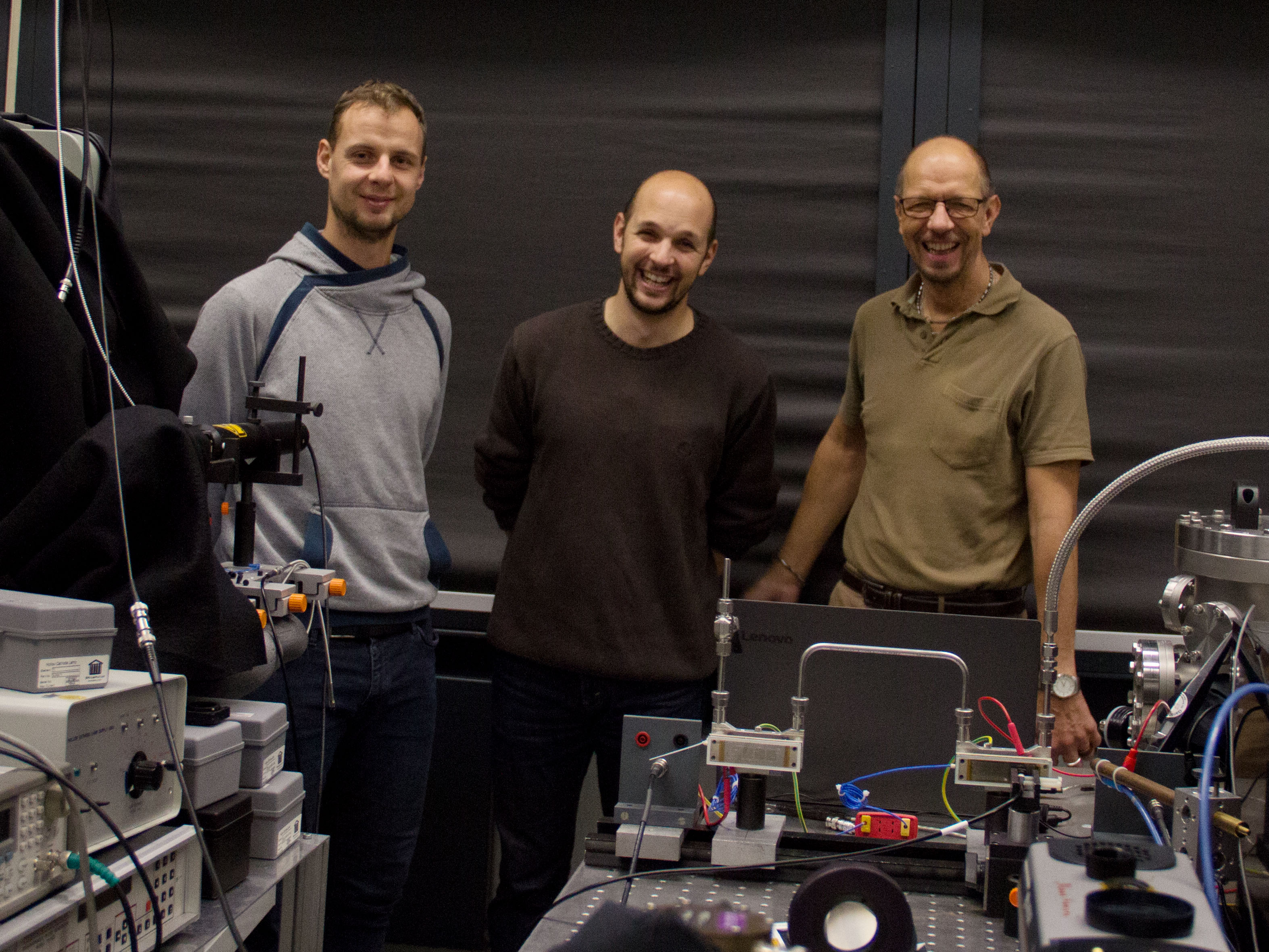 Dr. Sylvain Iséni stayed from October 21st until October 31st, 2019, in the group of Prof. Achim von Keudell. His visit is part of the collaboration with his home institute, GREMI, espacially, Prof. Remi Dussart. Particularly, the focus of the recent visit is are eletric field measurements by optical emission spectroscopy in the project A6 (Dr. Volker Schulz-von der Gathen, Sebastian Dzikowski) of the CRC 1316. In the project micro cavity arrays are investigated.
Dr. Sylvain Iséni stayed from October 21st until October 31st, 2019, in the group of Prof. Achim von Keudell. His visit is part of the collaboration with his home institute, GREMI, espacially, Prof. Remi Dussart. Particularly, the focus of the recent visit is are eletric field measurements by optical emission spectroscopy in the project A6 (Dr. Volker Schulz-von der Gathen, Sebastian Dzikowski) of the CRC 1316. In the project micro cavity arrays are investigated.
Furthermore, Dr. Iséni used the chance to participate in the online seminar and had a talk with the title "Temperate micro-plasmas for environmental purposes: sources, properties, cross-diagnostics & challenges".


